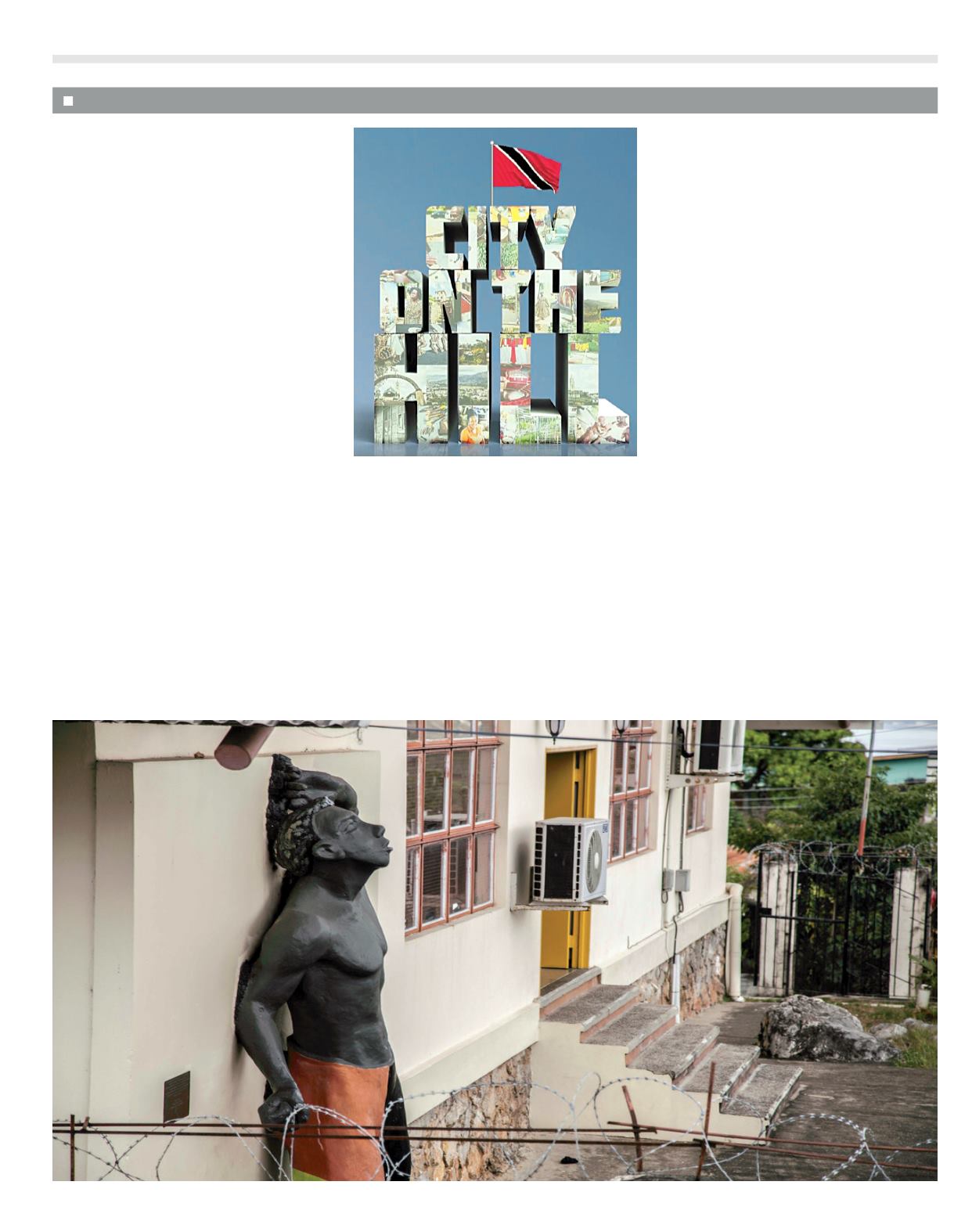
20
UWI TODAY
– SUNDAY 1st NOVEMBER, 2015
AT THE MOVIES
Big Ben. Time’s Square.
Christ the Redeemer. These iconic
images need no introduction and easily conjure sweeping
landscape shots in ourminds. Professor PatriciaMohammed
andUWI FilmProgramme alumMichael Mooleedhar allow
East Port of Spain audiences to see themselves on screen
alongside these iconic landmarks, as co-directors of the
documentary, “City on the Hill.”
Drama happens from the onset with the sounds of
Madame Butterfly juxtaposed against a wide shot of Our
Lady of Fatima atop the hills of Laventille. One of the
most talked about aspects of the film – for better or worse
– Laventille sprawls before the viewer in all her glory and
the film demands that you take her in. In the Q&A session
following the screening, Professor Mohammed noted that,
“There was a moment when I went up the hill and I was
sitting looking at Mary, and imagining the epic tragedy
of Laventille…and nothing spoke to me the way Madame
Butterfly does and the idea of starting with that was also
engaging with that tragedy by representing a vision of their
pathos.”
To understand the tragedy of Laventille is to go to back
to the beginning and reimagine how the “city that built the
city” contributed to the creative, spiritual and architectural
hallmarks we now identify as undeniably ‘Trini.’ The film
does this by giving us an insider’s perspective through the
eyes of its residents. Members of the Rada, Hindu, Christian
and Orisha religious societies warmly invite the camera to
“come in, come in” and be witness to a community united
in faith.
Observatory Street’s history is excavated as a reminder
of the Laventille of yesteryear – the site where Don Cosmo
Damien Churruca, Spanish Officer and scientific navigator,
led an expedition to fix the longitudinal points in the
New World relative to Cadiz, Spain in 1792 resulting in
the establishment of an observatory at Fort Chacon. The
placement of these historical gems throughout the film is no
coincidence, since its inception was part of a three-pronged
project made possible throughThe UWI Trinidad &Tobago
Research and Development Impact Fund (RDI), Leveraging
Built and Cultural Heritage of East Port of Spain, led by Dr.
Asad Mohammed. The project also includes a 3-D model
of the city and a book, which are mentioned in the film.
Professor Patricia Mohammed is taking a break from
filming to complete her next book.
Michael Mooleedhar is working on the pre-production
stages of the film, “Green Days by the River.”
Jeanette G. Awai is a freelance writer and marketing
and communications assistant at the Marketing and
Communications Office, UWI St. Augustine.
Patricia Mohammed
Michael Mooledhar
B Y J E A N E T T E A W A I
The City
We Built
When asked if being tied to such a specific message limited
the scope of the film, Mooleedhar said, “They gave us the
freedom to go in any direction we wanted – because of that
awareness it helped mould the direction of the film – it was
an opportunity.”
With much creative freedom comes the responsibility
of a dynamic personality to channel it, and Wendell
Manwarren fills that slot as both an omniscient narrator
and subject in the film. He provides the artistic vehicle to
bring to life the Laventille depicted in great literary works
by reciting quotes from Derek Walcott, Wayne Brown and
Earl Lovelace – delivered with rooted oratorical flourish as
onlyManwarren, Belmont native can. ForManwarren, other
artists, makers and Carnival enthusiasts alike, Laventille is
remembered as their coveted muse, “She was the hill, she
was their own.They would have fought for her, lifted her up,
made her queen.” Laventille’s reciprocal affections however,
lie not with her admirers, but the smallest among them– the
children. The film closes with its most picturesque scene –
an old-fashioned kite fight between two neighbourhood
children, set to the pulsating score of a drum riddim section.
One kite flies high above the other with Laventille’s hills as
backdrop – whose kite will get cut first? The camera shifts
back and forth as the kites become entangled and finally,
the loser’s kite is guillotined; yet our gaze remains hopeful,
watching the unattached kite flying freely, disappearing into
the atmosphere.
So is the future of Laventille, a city whose narrative is
often etched with violence and tragedy, yet she guides her
dwellers to look upwards, remembering that they are the
light of the world, for a city built on a hill cannot be hid.


